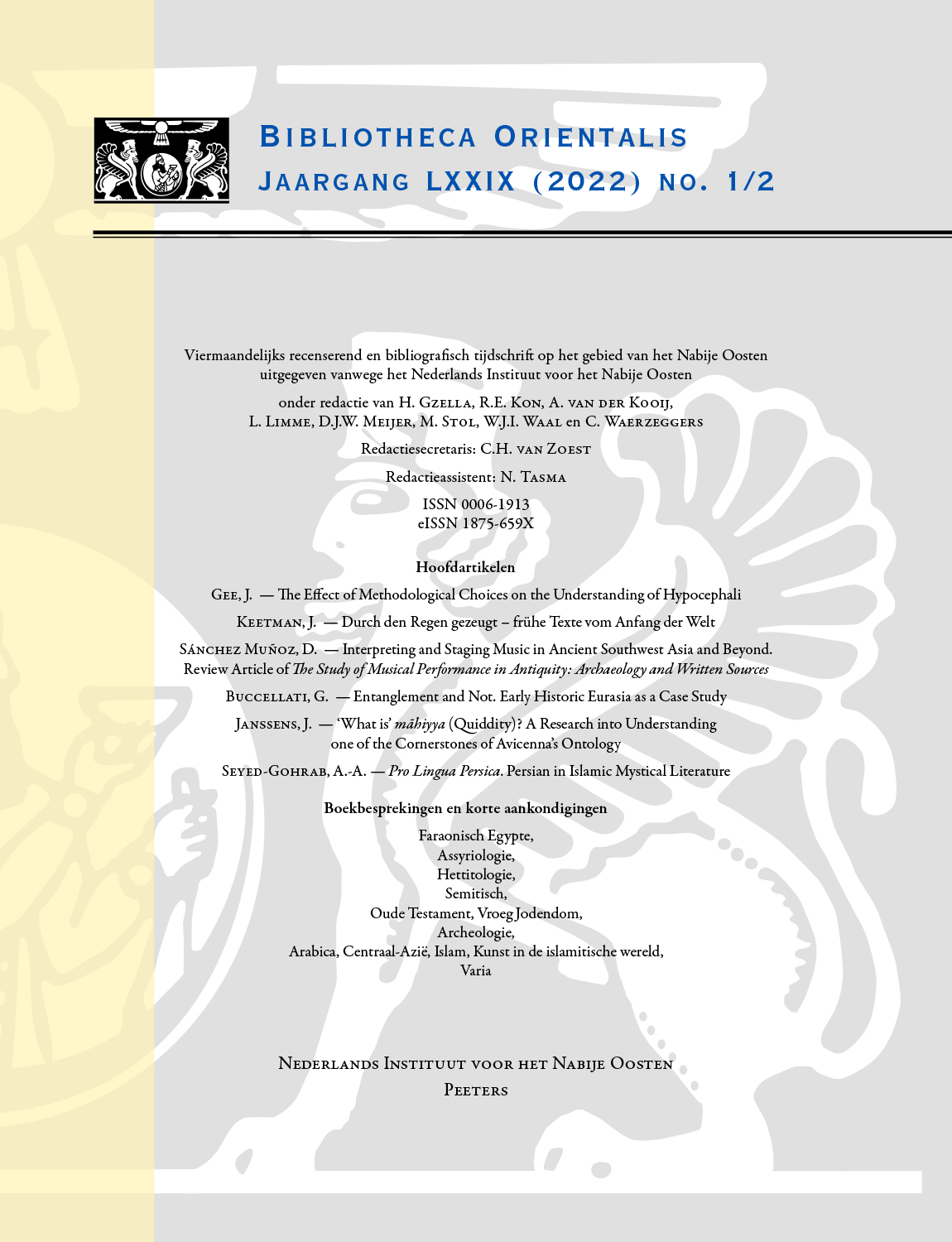next article in this issue  |

Preview first page |
Document Details : Title: Sense and Nonsense in the Statistical Approach of Babylonian Prices Author(s): VAN DER SPEK, R. , MANDEMAKERS, C.A. Journal: Bibliotheca Orientalis Volume: 60 Issue: 5-6 Date: september - december 2003 Pages: 521-537 DOI: 10.2143/BIOR.60.5.2015638 Abstract : Economic history of the ancient world is usually impaired by the lack of numerical data which allows a statistical approach. It is therefore very exciting for the historian of the Hellenistic period to find a fairly detailed recording of the prices of food and wool over a period of more than four centuries in the so-called astronomical diaries from Babylon. The astronomical diaries give us an unique view of the development of prices over a very long period of ca. 464-61 B.C., in a degree of detail which is exceptional for ancient history. The diaries are monthly reports, copied on clay tablets in the Babylonian cuneiform script, of the movement of the planets in the starry sky. It is of the utmost importance for historical research that the astronomers to an increasing extent noted down observations of other kinds at the end of the monthly reports. They registered the purchasing power of the shekel (ca. 8.33 grammes of silver, roughly two drachms) in relation to five basic foodstuffs: barley, dates, mustard (cuscuta?), cress (cardamom?) and sesame (all in litres2)), and wool (in pounds). In addition, they reported events of political and local (=Babylonian) importance: about campaigns of kings, about visits to the city of kings and high officials, about repairs of the temples, conflicts in the city, epidemic diseases, etc. The level of the Euphrates was also carefully registered. All of this probably had an astrological purpose. Recently these astronomical diaries have become accessible to a wider audience by the publication of the tablets in three volumes in transcription and translation by the late Abraham Sachs and by Hermann Hunger (1988, 1989 and 1996). |
 |


